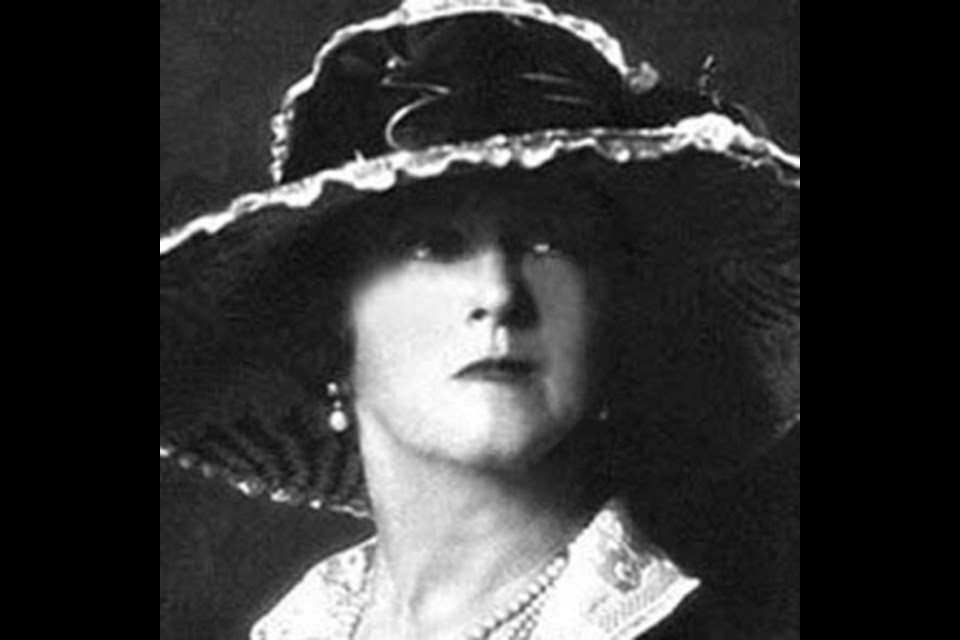Guelph was once home to a pair of sisters who were destined to gain both fame and notoriety.
Lucy was born in London, England, in 1863. Elinor was born on the Isle of Jersey in 1864. They were the daughters of a civil engineer named Douglas Sutherland and his wife Elinor, whose father, Col. Thomas Saunders, was the first magistrate of Wellington County.
The girls’ father died from typhoid fever in 1865. Their mother had promised to honour his final wish, that their daughters would be raised in England. However, her financial situation made it necessary for her to take them to her family in Canada.
The widow certainly was not in dire straits. Her mother, Lucy Anne Saunders, came from a pioneering Guelph family that had prospered. She was determined that her granddaughters should have a genteel upbringing. The bereaved mother and daughters moved into a beautiful limestone house called Summerhill on what is now Harcourt Dr. in Guelph.
Young Lucy and Elinor attended school in Guelph, but also had private tutors and governesses. Their strict grandmother taught them etiquette and the social graces. Elinor responded well to this training, but Lucy rebelled against attempts to make her “be a lady.” She preferred to “run wild” in the farm fields around their home. Elinor would later say the years in Guelph, “developed my character, moulded my tastes and coloured my point of view for life.”
Every year, a shipment of the latest Paris fashions arrived at Summerhill. The expensive clothes not only delighted the girls, but fired imaginations already steeped in the romantic tales they read in books. Lucy began making doll clothes from costly French fabrics, and was soon designing and sewing dresses for herself and her mother and sister.
The idyllic sojourn in Guelph ended in 1872. The girls’ mother married a man named David Kennedy who took the family back to England. Life with the dour, penny-pinching Kennedy wasn’t happy.
Lucy was married in 1884 and had a daughter she named Esme. The marriage ended in divorce four years later. To support herself and her daughter, Lucy made dresses for London’s high society. The revolutionary designs of her “personality” dresses were so popular that she became independently wealthy. Lucy introduced slit skirts, low necklines and alluring lingerie. She freed fashion-conscious society women from restrictive Victorian corsets. Her “mannequin parade” pioneered the modern fashion show.
Lucy established Maison Lucille in London in 1895, and branched out to Paris, New York and Chicago. By the time she married Sir Cosmo Duff-Gordon in 1900, Lucy was internationally famous. Her clientele included royalty, and in coming years she would add stars of stage and screen.
In 1892, wearing a wedding dress designed by Lucy, Elinor married Clayton Glyn, a man 10 years her senior whose extravagant lifestyle put them deeply in debt. She began writing to earn money. Her 1907 novel, Three Weeks, contained steamy love scenes on a tiger skin that shocked Edwardian England – and made it an international best-seller. A popular rhyme went:
Would you like to sin
With Elinor Glyn
On a tiger skin?
Or would you prefer
To err with her
On some other fur?
Of the38 books Elinor wrote, It, which presented her definition of sex appeal, was the most sensational. The concept of the “It Girl” was personified by actress Clara Bow in the movie “It”, for which Elinor wrote the screenplay.
Lucy, now known as Lady Duff-Gordon, and Elinor were celebrities who rubbed shoulders with the rich and famous. But both were touched by scandal. Elinor publicly carried on an affair with Lord George Curzon. And although her racy novels were tame by today’s standards, many people considered them immoral.
Lucy and Cosmo were survivors of the sinking of the Titanic. A controversial report accused them of using their wealth to bribe their way into a lifeboat. An official inquiry exonerated them of any wrongdoing, but their reputations suffered.
Neither sister ever returned to Guelph. Both died in England; Lucy in 1935 and Elinor in 1943. Elinor Glyn’s works are still in print. Fans of the TV series Downton Abbey have seen the popular show’s actors dressed in clothes made from designs by Lucy Duff-Gordon.



